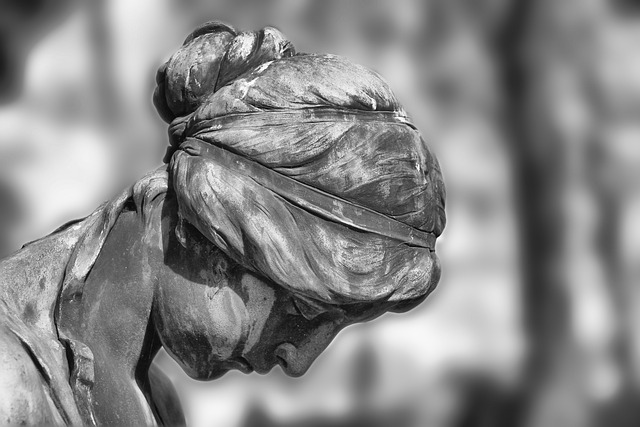Direct cremation, a cost-effective alternative to traditional burials, involves removing and cremating the body without intermediate stops. Reputable cremation services handle the process with professionalism, returning cremated remains (ashes) to families in urns or containers. Planning requires selecting licensed cremation services and adhering to legal requirements, including consent from next of kin and a certified death certificate. Families can then choose between scattering, burial, or incorporating ashes into keepsakes. Direct cremation offers dignity, personalization, and cost savings while acknowledging varied cultural, religious, and personal preferences.
Direct cremation is a growing trend among those seeking a simple, affordable final disposition option. This comprehensive guide breaks down what to expect from start to finish, offering a transparent look at the direct cremation process. We’ll explore the legal requirements and final resting places for cremated remains, as well as tips for choosing reputable cremation services. Learn how to navigate grief after direct cremation and make informed decisions about this modern approach to cremation.
- Understanding Direct Cremation: A Comprehensive Overview
- The Process: From Start to Finish
- Choosing the Right Cremation Services
- What Are the Legal Requirements?
- Final Disposition Options
- Dealing with Grief After a Direct Cremation
Understanding Direct Cremation: A Comprehensive Overview

Direct cremation is a straightforward and efficient process offered by most cremation services. It involves removing the body from the place of death, transporting it to the crematory, and performing the cremation without any additional services or stops. This method is chosen by those who prefer a simple, private disposition, often as a cost-effective alternative to traditional burials.
This type of cremation eliminates unnecessary steps, reducing time and expenses. Following the cremation, the family receives the cremated remains in a container or urn. Many cremation services also provide options for scattering or burial of these remains, allowing families to honour their loved one’s final rest according to personal preferences.
The Process: From Start to Finish

The process of direct cremation is a straightforward and efficient way to honour a loved one’s final wishes. It begins with the family contacting reputable cremation services, providing necessary documentation, and scheduling the pickup or drop-off of the remains. Following this initial step, the cremation itself takes place in a specialized facility. During cremation, the body is carefully reduced to its essential elements through high-temperature heating, ensuring a quick and permanent process.
Once cremated, the remains are typically returned to the family in a secure container or urn. This final step allows for a dignified closure and gives families the opportunity to scatter or inter the remains according to their preferences. Throughout this journey, reputable cremation services provide support and guidance, ensuring every aspect of the process is handled with care and professionalism.
Choosing the Right Cremation Services

When considering a direct cremation, one of the most important steps is selecting the right cremation services. It’s crucial to choose a reputable and licensed provider that offers transparent pricing and high-quality care. Look for companies with experienced professionals who can guide you through every step of the process, ensuring peace of mind during this emotional time.
Researching different cremation services will help you understand their offerings, from funeral planning assistance to various customization options like urn selection or scattering ceremonies. The right provider should not only handle the cremation itself but also support your family in creating a meaningful tribute for the departed, catering to your specific needs and preferences.
What Are the Legal Requirements?

When considering a direct cremation, it’s important to understand the legal requirements that govern this process. Each jurisdiction has specific regulations in place for cremations, which typically involve obtaining proper authorization and ensuring compliance with local laws. For instance, many areas require an affidavit or declaration from the next of kin, confirming their consent for the cremation. This document also specifies the individual’s identity and the cause of death, providing legal protection for both the family and the cremation services provider.
Additionally, there might be restrictions on who can authorize the cremation, such as requiring a certified death certificate to be presented by a medical professional. These measures are in place to safeguard against potential abuses and ensure that cremations are carried out ethically and legally. Understanding these requirements is crucial when planning a direct cremation, ensuring peace of mind and adherence to the necessary procedures.
Final Disposition Options

When it comes to final disposition options, direct cremation offers a straightforward and efficient process. This means that after the cremation is complete, the remains are usually returned to the family in a biodegradable container or urn. From there, families have numerous ways to memorialize their loved one. They can scatter the ashes in a meaningful location, incorporate them into keepsake jewelry, or even have them buried in a cemetery plot.
Cremation services provide a flexible and personalized approach, allowing families to make decisions that align with their cultural, religious, or personal preferences. Whether choosing a simple scattering ceremony or a more elaborate burial, direct cremation ensures a dignified and respectful end-of-life option while also offering cost-effectiveness compared to traditional burials.
Dealing with Grief After a Direct Cremation

After a direct cremation, it’s natural for individuals to experience a range of emotions as they navigate their grief. This process can be particularly unique, as there isn’t a traditional funeral or burial service to say goodbye. Many find comfort in knowing that cremation services provide a simple yet meaningful way to honor and remember their loved one.
Grief is a personal journey, and there’s no right or wrong way to cope. Some may choose to spread their loved one’s ashes in a special place, create keepsakes, or even have a private memorial service. Cremation societies often offer support during this time, providing resources and guidance tailored to individual needs. It’s crucial to be patient with yourself and allow the process of healing to unfold at its own pace.
Direct cremation offers a straightforward and personalized way to honor a loved one’s memory. By understanding the process, legal requirements, and available final disposition options, individuals can make informed decisions about this type of cremation. Choosing reputable cremation services is crucial, ensuring a peaceful and respectful send-off tailored to individual preferences. This comprehensive guide provides essential knowledge for navigating the path forward after a direct cremation, including managing grief and finding closure.
